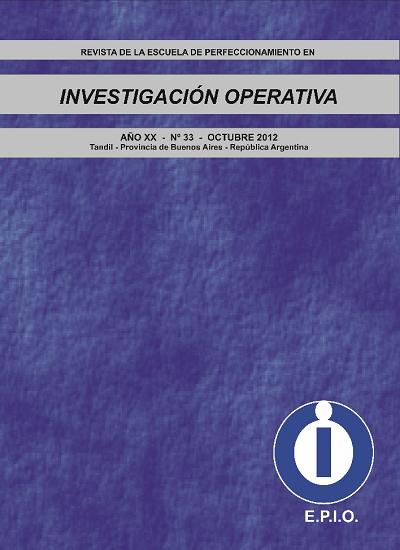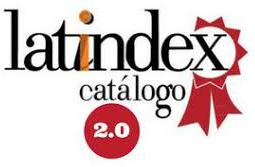Efficiency measures in education: a comparison of parametric and nonparametric methods with application to the Province of Buenos Aires
Keywords:
technical efficiency, stochastic frontier, DEA, educationAbstract
This work has two main objectives: the first one is to measure the
technical efficiency of the student and the school for the particular case of the province of Buenos Aires, through the use of parametric distance functions and data envelopment analysis. The second is to compare the results obtained by the two methodologies considered and analyze the consistency between them. For that we use data of 118,454 students between 10 and 12 years old from the National Assessment of Educational Quality for the year 2000. The results show a higher relative efficiency of students who goes to privately managed schools. Also, both methodologies leads to very similar results, making it possible to say that, for this case, the efficiency measures obtained are consistent with each other, especially in regard to identifying the most inefficient production units.
Downloads
References
AIGNER, D. J.; LOVELL, C. A. K.; SCHMIDT, P. (1977): “FORMULATION AND ESTIMATION OF STOCHASTIC PRODUCTION FUNCTION MODELS”. Journal of Econometrics – Vol 6 – pgs. 21-37.
BANKER, R. D.; MOREY, R. (1986): “EFFICIENCY ANALYSIS FOR EXOGENOUSLY FIXED INPUTS AND OUTPUTS”. Operations Research – Vol 34 – pgs. 513-521.
BANKER, R. D.; CHARNES, A.; COOPER, W. W. (1984): “MODELS FOR ESTIMATING TECHNICAL AND SCALE EFFICIENCIES IN DATA ENVELOPMENT ANALYSIS”. Management Science – Vol. 30(9) – pgs. 1078-1092.
BAUER, P. W.; BERGER, A. N.; FERRIER, G. D.; HUMPHREY, D. B. (1998): “CONSISTENCY CONDITIONS FOR REGULATORY ANALISYS OF FINANCIAL INSTITUTIONS: A COMPARISON OF FRONTIER EFFICIENCY METHODS”. Journal of Economics and Business – Vol. 50 – pgs. 85-114.
CERVINI, R. (2005): “TRABAJO INFANTIL URBANO Y LOGRO EN MATEMÁTICAS DE LA EDUCACIÓN BÁSICA. UN MODELO EN DOS NIVELES”, Revista Mexicana de Investigación Educativa – Vol. 10 (025) – pgs. 451-480.
CHARNES, A.; COOPER, W.; RHODES, E. (1978), “MEASURING THE EFFICIENCY OF DECISION MAKING UNITS”. European Journal of Operational Research – Vol. 2 (6) – pgs. 429-444.
CHRISTENSEN, L., JORGENSON, D.; LAU, L. (1971): “CONJUGATE DUALITY AND THE TRASCENDENTAL LOGARITHMIC PRODUCTION FUNCTION”. Econometrica – Vol. 39(4) – pgs. 255-256.
COELLI, T.; PERELMAN, S. (1999): “A COMPARISON OF PARAMETRIC AND NON-PARAMETRIC DISTANCE FUNCTIONS: WITH APPLICATION TO EUROPEAN RAILWAYS”. European Journal of Operational Research – Vol. 117 – pgs. 326-339.
GROSSKOPF, S.; HAYES, K.; TAYLOR, L.; WEBER, W. (1997). “BUDGETCONSTRAINED FRONTIER MEASURES OF FISCAL EQUALITY AND EFFICIENCY IN SCHOOLING”. Review of Economics and Statistics – Vol. 79(1) – pgs. 116-124.
HANUSHEK, E. (1986): “THE ECONOMICS OF SCHOOLING: PRODUCTION AND EFFICIENCY IN PUBLIC SCHOOLS”. Journal of Economic Literature – Vol. 24(3) – pgs. 1141-1171.
HANUSHEK, E. (2003): “THE FAILURE OF INPUT-BASED SCHOOLING POLICIES”. The Economic Journal – Vol. 133 – pgs. 64-98.
LLACH, J.; MONTOYA, S.; ROLDÁN, F. (1999): EDUCACIÓN PARA TODOS, IERAL, Fundación Mediterránea.
LOVELL, C. A. K. (1993): “PRODUCTION FRONTIERS AND PRODUCTIVE EFFICIENCY”. En Fried, H.; Lovell, C. A. K. y Schmidt, S. (eds.): The
Measurement of Productive Efficiency – pgs. 3-67. Oxford University Press, Oxford.
LOVELL, C.A.K.; RICHARDSON, S.; TRAVERS, P.; WOOD, L.L. (1994): “RESOURCES AND FUNCTIONINGS: A NEW VIEW OF INEQUALITY IN
AUSTRALIA”. En Eichhorn, W. (Ed.): Models and Measurement of Welfare and Inequality, Springer, Berlin.
PEDRAJA, F; SALINAS, J.; SMITH, P. (1997), “ON THE ROLE OF WEIGHTS RESTRICTIONS IN DATA ENVELOPMENT ANALYSIS”. Journal of Productivity Analysis – Vol. 8 – pgs. 215-230.
PERELMAN, S.; SANTÍN, D. (2008): MEASURING EDUCATIONAL EFFICIENCY AT STUDENT LEVEL WITH PARAMETRIC STOCHASTIC DISTANCE FUNCTIONS: AN APPLICATION TO SPANISH PISA RESULTS. Education Economics, DOI: 10.1080/09645290802470475.
SANTÍN, D. (2006): “LA MEDICIÓN DE LA EFICIENCIA DE LAS ESCUELAS: UNA REVISIÓN CRÍTICA”. Hacienda Pública Española / Revista de Economía Pública – Vol 177 – pgs. 57-82.
SILVA M. C.; THANASSOULIS, E. (2001), “DESCOMPOSING SCHOOL AND SCHOOL TYPE EFFICIENCY”. European Journal of Operational Research - Vol 132 – pgs. 357-373.
SIMAR, L.; WILSON, P. W. (2000), “STATISTICAL INFERENCE IN NONPARAMETRIC FRONTIER MODELS: THE STATE OF THE ART”. Journal of Productivity Analysis – Vol. 13 – pgs. 49-78.
SUMMERS, A. A.; WOLFE, B. L. (1977), “DO SCHOOLS MAKE A DIFFERENCE?”. American Economic Review – Vol. 67(4) – pgs. 639-652.
THANASSOULIS, E. (1999), “SETTING ACHIEVEMENTS TARGETS FOR SCHOOL CHILDREN”. Education Economics – Vol. 7(2) – pgs. 101-119.
THANASSOULIS, E.; SILVA, M. C. (2002), “SCHOOL OUTCOMES: SHARING THE RESPONSIBILITY BETWEEN PUPIL AND SCHOOL”. Education Economics – Vol. 10 (2) – pgs. 183-207.
WILSON, P. W. (1995), “DETECTING INFLUENTIAL OBSERVATIONS IN DEA”. Journal of Productivity Analysis – Vol. 6 – pgs. 27-45.
Downloads
Published
How to Cite
Issue
Section
License
Atribución — Usted debe dar crédito de manera adecuada, brindar un enlace a la licencia, e indicar si se han realizado cambios. Puede hacerlo en cualquier forma razonable, pero no de forma tal que sugiera que usted o su uso tienen el apoyo de la licenciante.
NoComercial — Usted no puede hacer uso del material con propósitos comerciales.
CompartirIgual — Si remezcla, transforma o crea a partir del material, debe distribuir su contribución bajo la misma licencia del original.







